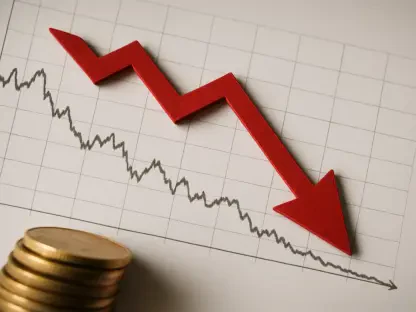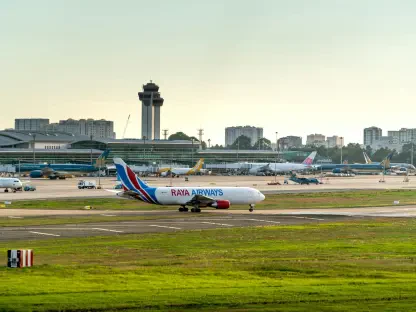As the global economy navigates through a maze of uncertainties, a pressing question looms over policymakers, businesses, and citizens alike: is a significant downturn inevitable within the next year? Recent analyses from esteemed economic bodies paint a complex picture, blending short-term resilience with ominous long-term warnings. Reports from leading organizations reveal a world economy at a critical juncture, where temporary boosts in growth clash with deep-rooted structural challenges. The urgency to understand these conflicting signals has never been greater, as the decisions made today could shape the financial landscape for years to come. This article delves into the latest forecasts, exploring the factors driving both optimism and concern. From trade disruptions to technological shifts, the forces at play are multifaceted, demanding a closer look at whether the global economy can weather the storm predicted by many experts or if a downturn by 2026 is a foregone conclusion.
Short-Term Resilience vs. Long-Term Warnings
The global economic outlook presents a striking paradox, with immediate growth projections offering a glimmer of hope while long-term forecasts sound alarms of decline. According to recent assessments, global growth for the current year has been revised upward to 3.2%, a surprising uptick driven by strategic maneuvers such as companies preemptively increasing imports to sidestep looming tariffs. Additionally, significant investments in artificial intelligence in key markets like the United States, coupled with heightened government spending in China, have fueled demand beyond earlier expectations. These factors suggest a robustness that defies pessimistic narratives, providing a buffer against immediate economic shocks. However, this resilience is viewed by many economists as a temporary shield, masking underlying vulnerabilities that could unravel if not addressed with urgency. The contrast between this short-term strength and the broader concerns highlights a critical need for strategic planning to sustain momentum.
Beyond the immediate horizon, the outlook grows increasingly grim, with nearly three-quarters of surveyed economists predicting a weakening global economy by 2026. This anticipated downturn is not attributed to fleeting disruptions but to entrenched structural issues that threaten stability. Persistent trade tensions, rapid technological advancements outpacing adaptation, and strains on natural resources and energy systems are cited as primary culprits. Furthermore, the erosion of trust in global institutions complicates coordinated responses to these challenges. Experts emphasize that without collaborative efforts to build resilience, the world risks sliding into a prolonged period of economic fragility. The urgency for leaders to pivot toward adaptive strategies is palpable, as the window to mitigate these risks narrows. This long-term perspective serves as a stark reminder that current gains may be fleeting if systemic weaknesses are left unaddressed.
Diverging Paths of Advanced and Emerging Economies
A notable trend shaping the global economic landscape is the growing divergence between advanced and emerging economies, a disparity that could redefine trade and investment flows. Emerging markets, particularly in regions such as the Middle East, North Africa, South Asia, and East Asia-Pacific, are positioned for robust growth, fueled by demographic advantages and increasing integration into global markets. These areas are expected to drive a significant portion of global economic activity over the next few years, offering a counterbalance to struggles elsewhere. However, this growth is not without risks, as external shocks or policy missteps could derail progress. The disparity underscores a shifting dynamic where traditional economic powerhouses may no longer dictate the pace of global recovery, prompting a reevaluation of investment strategies and international partnerships.
In contrast, advanced economies like the United States and Europe face mounting challenges that threaten to stall their progress. The US contends with sluggish growth and stubborn inflation despite efforts to loosen monetary policies, while Europe leans heavily on fiscal support to avert a deeper decline. These regions grapple with low productivity and structural realignments that hinder their ability to compete with the dynamism of emerging markets. Over half of the economists surveyed anticipate that this economic divide will widen by 2028, creating a fragmented global landscape. Such a trend could lead to reshaped trade patterns, with emerging economies gaining influence at the expense of their advanced counterparts. This growing gap highlights the uneven nature of the current recovery and raises questions about the sustainability of global economic cohesion in the face of such disparities.
Rising Debt as a Barrier to Stability
Among the most pressing concerns for the global economy is the escalating debt burden in advanced nations, a risk flagged as a major impediment to future growth. Approximately 80% of surveyed economists predict that debt vulnerabilities in wealthier countries will worsen within the coming year, severely limiting governments’ capacity to respond to potential crises. Once considered a challenge primarily for developing nations, fiscal strain now looms large over richer economies, exacerbating the impact of low productivity and economic stagnation. This mounting debt restricts policy flexibility, leaving little room for stimulus or investment in critical areas like infrastructure or innovation. The implications of this trend are far-reaching, as constrained fiscal space could amplify the effects of any downturn, making recovery efforts more arduous.
Compounding the debt issue is the broader context of systemic disruptions that challenge economic stability. Fragmentation in trade, technology, and energy systems adds layers of complexity to an already strained fiscal environment. For advanced economies, the inability to address these interconnected issues risks entrenching economic woes, while emerging markets may find opportunities to capitalize on the shifting landscape. The consensus among experts is that without significant reforms to manage debt and bolster resilience, the global economy faces a heightened risk of turbulence. As these fiscal challenges intersect with structural shifts, the need for innovative solutions becomes paramount. Policymakers must prioritize sustainable financial strategies to navigate the uncertainties ahead, ensuring that debt does not become an insurmountable barrier to growth.
Charting a Path Through Economic Uncertainty
Reflecting on the insights gathered, it’s evident that the global economy stands at a pivotal moment, balancing unexpected short-term gains against a backdrop of looming structural threats. The resilience shown through strategic trade adjustments and targeted investments provides a temporary reprieve, yet the warnings of a downturn by 2026 echo loudly among experts. Moving forward, the focus must shift to actionable strategies that address systemic issues like trade disruptions, technological upheaval, and resource constraints. Collaborative efforts between nations and institutions could pave the way for greater stability, while targeted policies to manage debt in advanced economies might prevent fiscal crises. Additionally, leveraging the growth potential of emerging markets offers a pathway to balance global disparities. As the world braces for potential turbulence, adaptability remains key—businesses and leaders alike must innovate and prepare for a landscape that demands both caution and bold action to secure a sustainable economic future.









